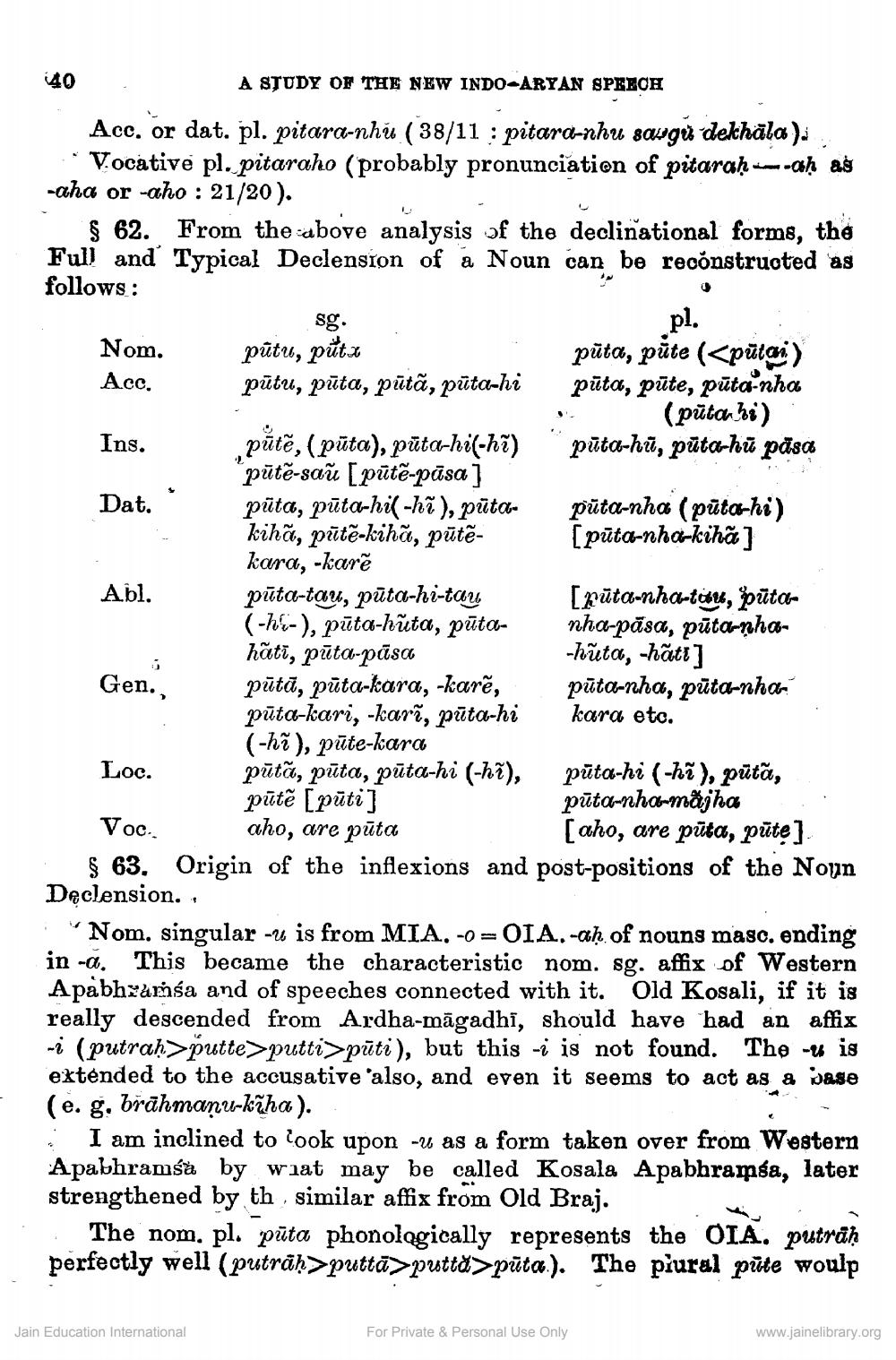________________
A STUDY OF THE NEW INDO-ARYAN SPEECH Acc. or dat. pl. pitar-nha (38/11 : pitara-nhe gauga dekhala) - Vocative pl. pitaraho (probably pronunciation of pitaraḥ---aḥ aš -aha or -aho : 21/20).
$ 62. From the above analysis of the declinational forms, the Full and Typical Declension of a Noun can be reconstructed as follows: sg.
pl. Nom. pūtu, pūtx
pūta, pūte (<pūtai) Acc. pūtu, pūta, pūtā, pūta-hi pūta, pūte, pūta-nha
. (pūtauhi) Ins.
pūtē, (pūta), pūta-his-hi) pūta-hữ, pūta-hū pāsa
pūtē-saŭ [pūtě-pūsaj Dat. pūta, pūta-hil-hã), pūta pūta-nha (pūtar-hi)
kihã, pūtē-kihã, pūtē- [pūta-nha-kihã]
kara, -karē Abl. pūta-tau, pūta-hi-tau, [pūta-nha-tou, pūta
(-h-), pūta-hūta, pūta- nha-pāsa, pūta-nhahāti, pūta-pāsa
-hūta, -hâti] Gen. pūtā, pūta-kara, -karē, pūta-nho, pūta-nha
pūta-kari, -karī, pūta-hi kara eto.
(-hī), pūte-kara Loc. pūtā, pūta, pūta-hi (chị), pūtachi (-hž), pūtā, pūtē [pūti]
pūta-nho-majha aho, are pūta
[ aho, are pūta, pūte] $ 63, Origin of the inflexions and post-positions of the Noun Declension.
Nom. singular -u is from MIA. -0 =OIA.-aħ of nouns maso. ending in -a. This became the characteristic nom. sg. affix of Western Apabhyamsa and of speeches connected with it. Old Kosali, if it is really descended from Ardha-māgadhi, should have had an affix mi (putraḥ>putte>putti>pūti), but this -i is not found. The -u is extended to the accusative 'also, and even it seems to act as a vase (e. g. brāhmaņu-kiha). · I am inclined to look upon -4 as a form taken over from Western Apabhramśà by wiat may be called Kosala Apabhramsa, later strengthened by th similar affix from Old Braj.
The nom. pl. pūta phonologically represents the OIA. putraḥ perfectly well (putrāḥ>putta>puttd>pūta). The piural púte woulp
Voc.
Jain Education International
For Private & Personal Use Only
www.jainelibrary.org




